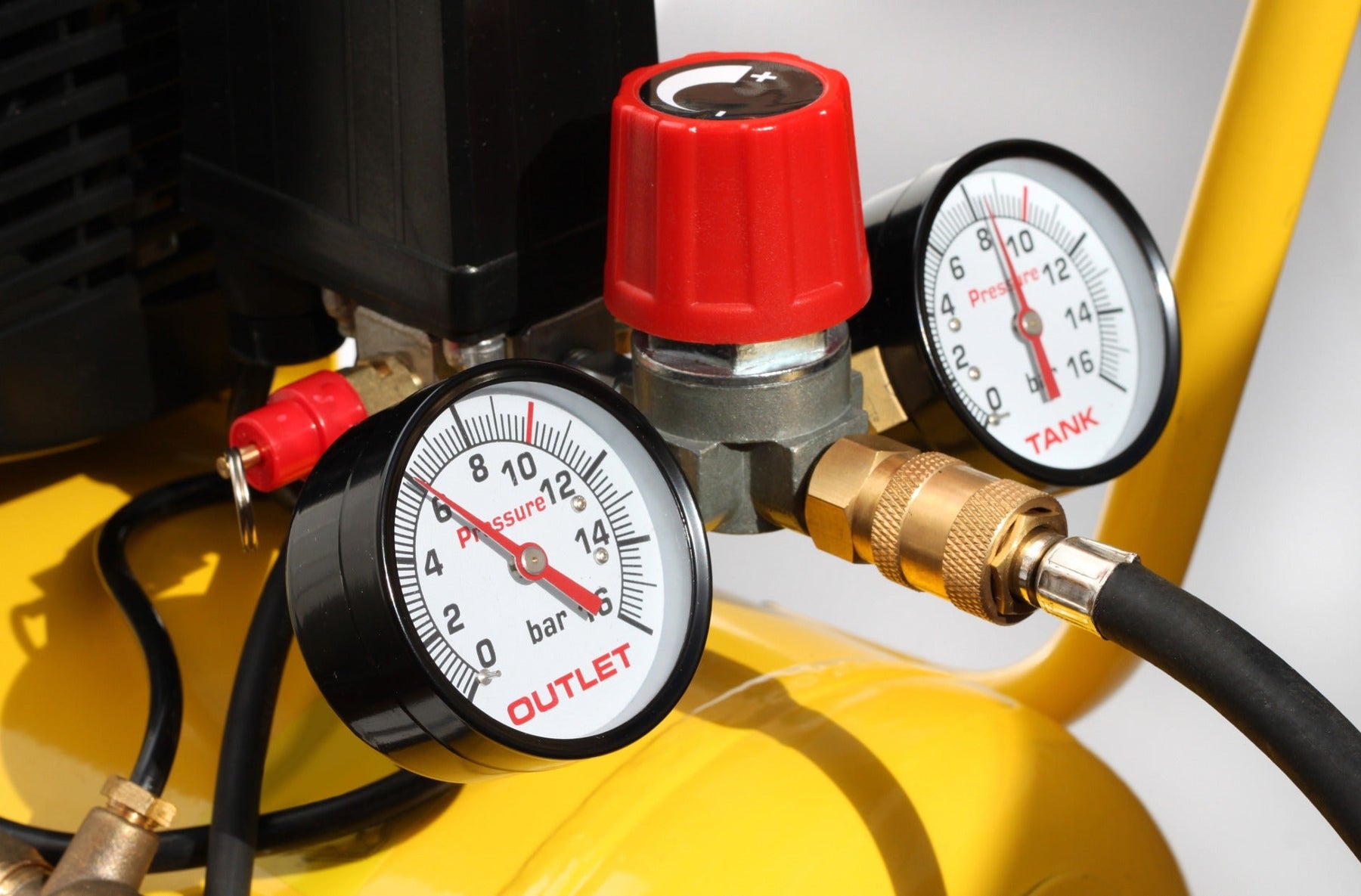
Understanding Your Air Compressor Regulator System
An air compressor is more than just a machine that pumps air. It's a system filled with parts that all work together to help control pressure, flow rate, and functionality. One of the most overlooked parts is the air compressor regulator system. This small component plays a big role in keeping your equipment operating smoothly and safely, yet it often doesn’t get much attention until something goes wrong.
Taking the time to understand how your regulator works can save you a lot of headaches. It helps you stay ahead of performance issues, avoid unnecessary downtime, and keep your equipment from working harder than it needs to. Whether you're handling routine maintenance or trying to troubleshoot uneven air pressure, knowing the job of the regulator and how to spot problems early can make all the difference.
What Is an Air Compressor Regulator?
An air compressor regulator is a control device that lets you manage the pressure of the compressed air coming out of your system. Think of it like the volume knob on a speaker. Turn it too high, things can blow out. Too low, and nothing works right. Its job is to keep the pressure just where it needs to be so your tools or machines run properly.
Here’s what the regulator does on a basic level:
- Adjusts the air pressure coming out of the tank to match what your equipment needs
- Maintains a consistent pressure level while you work
- Prevents pressure spikes that can damage hoses, fittings, or tools
Most regulators use a simple knob or dial to make adjustments. Inside, there’s usually a diaphragm or piston that reacts to changes in downstream air pressure. As output pressure drops, the regulator opens up slightly to let more air through from the tank. When the right level is reached, it closes again. That keeps the pressure stable while you work.
The setup may include a pressure gauge that shows exactly how much air is being pushed through, a spring mechanism to control movement, and a valve that actually opens or closes based on need. Altogether, it’s a pretty straightforward system, but when it’s not working right, the results show fast. You’ll notice uneven tool performance, wasted energy, or even damage from too much force.
How the Air Compressor Regulator System Works
Once air is compressed inside the tank, the next step is getting it to the tool or device you're using at the right pressure. That’s where the regulator system steps in.
Here’s a basic rundown of the process:
1. Compressed air builds up in the tank.
2. You turn the regulator dial to set your desired pressure level.
3. The regulator uses that setting to hold the output air at a steady pressure.
4. As air leaves and pressure dips, the regulator opens slightly to balance the flow.
It’s an automatic process that adjusts continuously while you're working. Some systems have additional regulators built in if you’re using multiple tools or machines with different pressure requirements. That way each one can run at its own pace without affecting the others.
One common setup involves a filter-regulator-lubricator or FRL unit. In this case, the air first passes through a filter that removes moisture and debris, then through the regulator to adjust pressure, and finally to a lubricator to add a light mist of oil when needed for moving parts.
If the regulator sticks open or closed, you'll likely notice either a drop-off in performance or a big pressure surge. In either case, something needs to be checked fast before it causes bigger problems. Catching and fixing those issues early can save the gear you depend on every day.
Benefits of a Well-Functioning Air Compressor Regulator
A well-functioning air compressor regulator offers several perks that help keep your equipment in peak condition. First, it cuts down on wear and tear. By keeping the air pressure steady and at the right level, you avoid making your tools or machines work harder than they should.
It also boosts performance in a noticeable way. When your equipment runs on steady pressure, it works more smoothly and predictably. That means fewer hiccups, better results, and less downtime. You won’t have to stop in the middle of a job to fix sudden pressure drops or equipment strain.
An added bonus is safety. Spikes in pressure create risks for both tools and operators. A well-working regulator keeps things stable, making sure the lines don’t burst and tools don’t backfire or break down. Keeping your pressure in check builds a safer and more reliable workspace.
Maintenance Tips for Your Air Compressor Regulator
Keeping your regulator in good shape helps your whole system last longer and perform better. Here are a few easy ways to do that:
- Regular Inspections: Check your regulator and the surrounding parts often. Look for cracks, leaks, or anything that looks worn. Spotting these signs early stops bigger issues.
- Clean Components: Dust and grime can build up and block airflow or jam parts. Wipe things down and clean the filter as needed to avoid clogs.
- Check Pressure: Compare the gauge readings to your set pressure. If you notice a gap between them, it could mean something is off inside the regulator.
- Listen for Odd Sounds: Strange hissing, whistling, or grinding noises aren’t normal. If your system starts making unexpected sounds, it's time to look into the cause.
If you’re running into the same issue over and over, it may be time to call in a professional. Specialized help can prevent a small malfunction from turning into full replacement costs or drained productivity. It's worth getting it taken care of before any major breakdowns.
Keeping Your System Efficient
Understanding and maintaining your air compressor regulator system keeps your setup working the way it should. When things are running right, jobs get done faster, and you're not replacing tools or parts as often. The cost savings and time gains add up.
Regular checks and timely repairs help keep your system reliable. When you pair that with high-quality parts like a well-matched air compressor filter regulator, you get peace of mind that your gear won’t let you down in the middle of a job.
The goal is to get the most out of your tools while avoiding the headaches that come from uneven pressure or faulty performance. Whether you manage a shop or keep machines going in a plant, understanding how your regulator fits into the full system pays off with longer life, safer work conditions, and fewer last-minute problems.
To keep your air system performing at its best, make sure you're using the right components. Find the perfect air compressor filter regulator for your setup at Compressor Filter Hub and keep your equipment operating smoothly, safely, and with less downtime.
